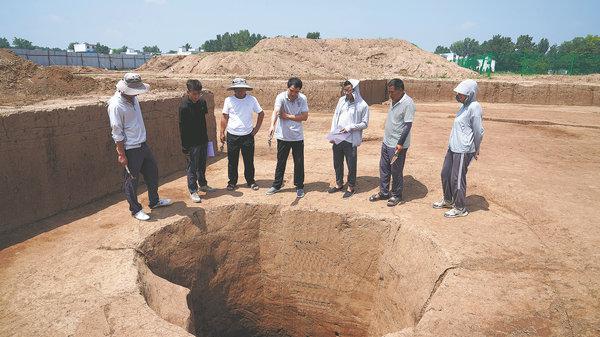
Zhao Haitao (center), leader of the archaeological team at the Erlitou site, and his colleagues check new findings on the site in 2024. (Photo provided to China Daily)
More than 65 years after its discovery, the Erlitou site in the heart of the Central China Plains, continues to yield new clues about the grand picture of early-stage Chinese civilization.
Best known for its bronze and turquoise artifacts, the site, spread across some 3 square kilometers in Luoyang, Henan province, was first found in 1959. Recent findings of architectural remains, road networks and other infrastructure indicate that the site, which dates to between 3,750 to 3,520 years ago according to carbon dating results, was the location of the capital city of the Xia Dynasty (c. 21st-16th century BC) during its late period.
It is the first central dynasty with extensive territory recorded in Chinese history.
Physical proof has popped up all over the Erlitou site that ushers the dynasty in from the realm of legend. In 2024, major breakthroughs were made around the core palace area, archaeologists recently revealed.
Walled sections are confirmed to have been unearthed on the crossroads by the palace area, according to Zhao Haitao, an associate researcher with the Chinese Academy of Social Sciences' Institute of Archaeology who leads excavations at Erlitou.
Previously unearthed crossroads are located to the west and south of the palace area, dividing the area into four subregions. Following the discovery of roadside walls in the three other subregions, Zhao's team speculated the remaining southwest section would have the same structure.
In 2024, that speculation was confirmed as the northeast corner of the wall in this zone was revealed. The remaining wall is about 2 meters across at its widest, and its discovery reveals for the first time the layout of the four subregional walls at the intersection of the crossroads.
"This discovery will significantly help the exploration of important issues such as the formation and development of the network-style layout of Erlitou urban centers, the content, characteristics and relationships of each subregion," Zhao explains.
"The strict and orderly multigrid layout of the city indicates the existence of a mature and developed system of governance and institutions at the time," he adds. "It's a key indicator for determining the transition of the city of Erlitou into a dynastic state."
Similar walled blocks, known as lifang, are noticeable elements of urban layout in the later history of China, particularly in the then capital of Chang'an (present-day Xi'an, Shaanxi province) during the Tang Dynasty (618-907) period, over 2,000 years after Erlitou.
"Each walled area corresponded to a unit of daily life with various functions," Wang Wei, a veteran archaeologist with CASS, says. "New findings at Erlitou could indicate this was the prototype of such structures."
According to Lei Xingshan, an archaeology professor at Beijing Union University, "it's also crucial inspiration for other prehistoric city ruins elsewhere in China".
"Such multigrid urban layouts could be a benchmark for conducting other studies throughout a lineage," Lei says.
A complex composed of foundations has also recently been excavated in the palace area. Coded D17("No 17 palace"), it includes two groups of row-house-style buildings, both built on rammed earth terraces, according to Zhao.
The row-house building on the north side, for example, has five rooms on its facade. It is one room deep, and 40 meters wide in an east-west orientation, and covers an area of about 310 square meters.
"It's the widest single-row building in terms of facade found at the Erlitou site so far," Zhao says.
Before this discovery, archaeologists had wondered whether the area was a central square, and the layout of previously discovered ruins nearby also confused researchers.
Expanding work beyond Eritou per se sometimes helps demonstrate its core status. Other than the palace area, interesting discoveries were made last year at the Guchengcun site, which is across the river from the Erlitou core zone. Long considered an independent archaeological site, three newly unearthed moats and a rammed wall are now giving pause for thought.
The No 1 section of the moat spans over 1,700 meters. It is nearly 10 meters wide and 2 meters deep. The direction of No 2 and 3 moats parallel the main roads and ruins in Erlitou.
"They also embrace the Erlitou site from its north and east," Zhao says. "They probably functioned as the outer boundary of the city."
If this hypothesis is proved correct in follow-up research, it would mean that the Erlitou site was larger than 3 sq km in size.
"If so, the Erlitou site could be far larger than other archaeological ruins of its time in China," Wang says. "This would further demonstrate its core status in a state."
Only an area of 59,500 sq m has been excavated at Erlitou in the 60-some years since its discovery, and many questions await to be answered.
Construction of a new national-level archaeological research center focusing on the Xia and the following Shang Dynasty (c. 16th-11th century BC) began in September in Luoyang. It will be equipped with research labs, restoration facilities and warehouses for archaeological materials. It is expected to become a new hub for international cooperation on Xia-Shang studies.









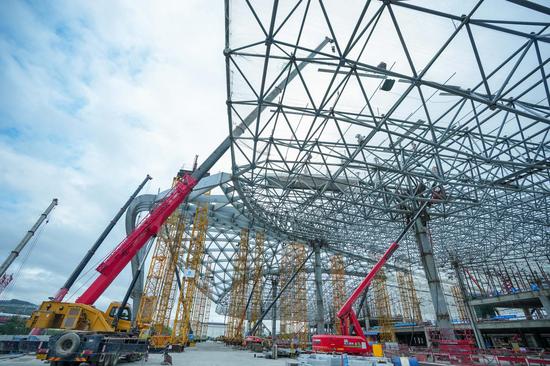
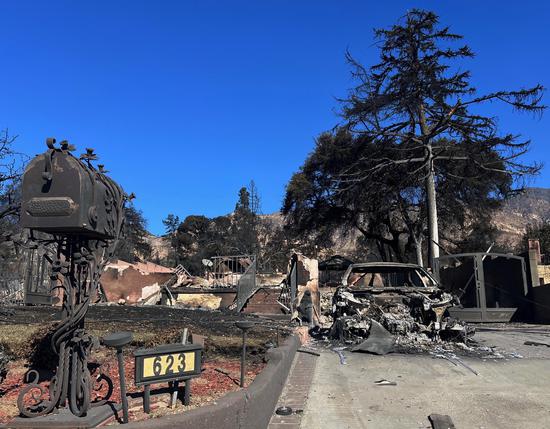




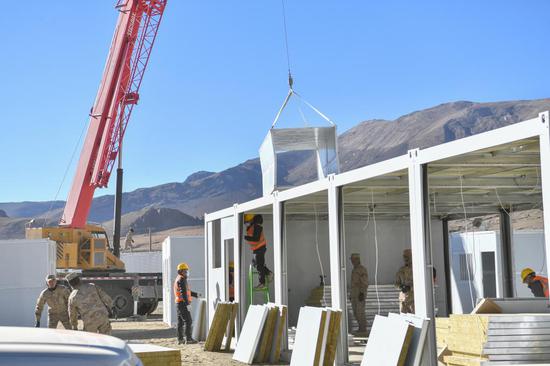



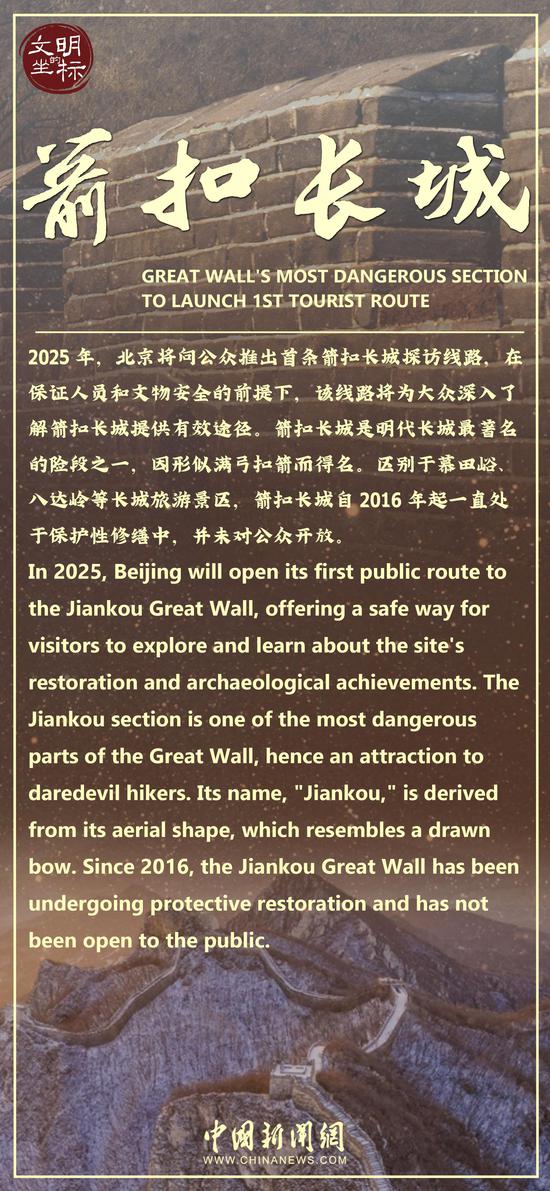

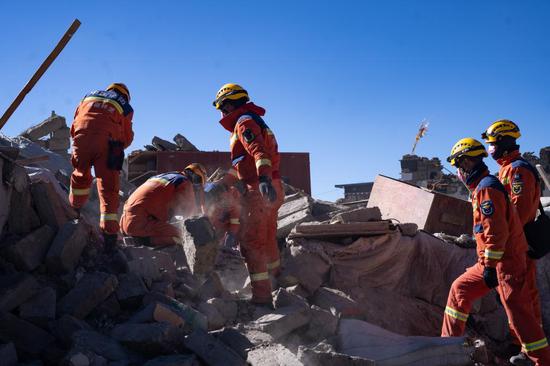




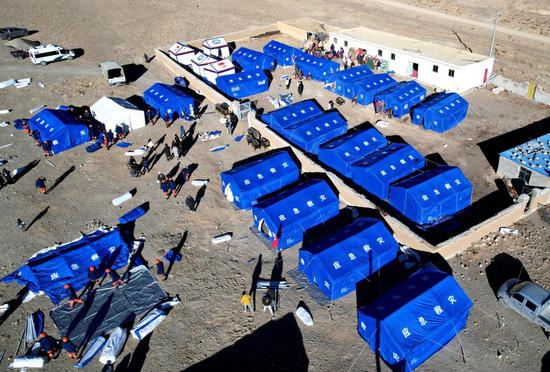

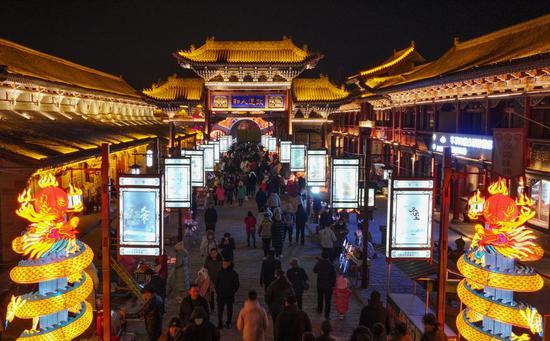


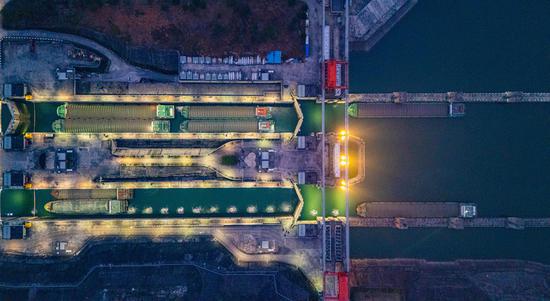




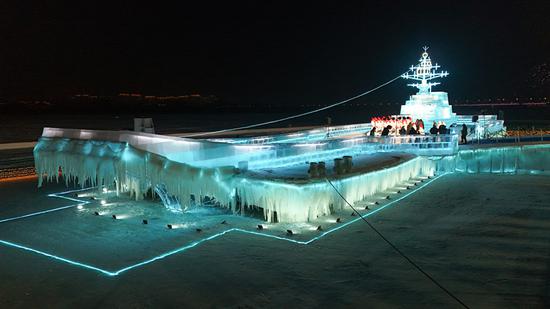



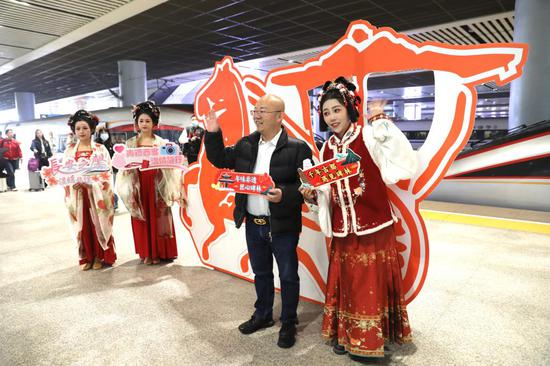
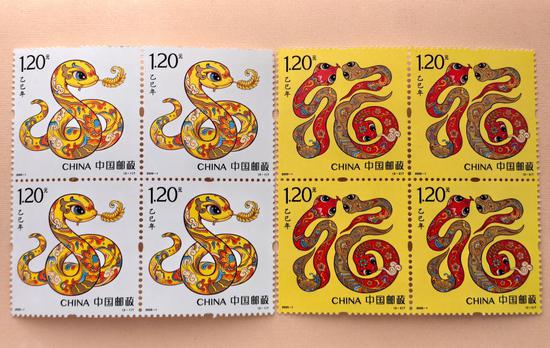

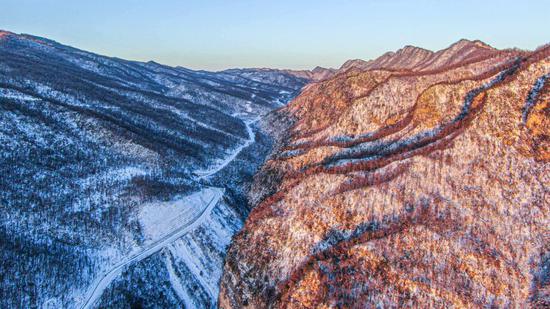






 京公网安备 11010202009201号
京公网安备 11010202009201号